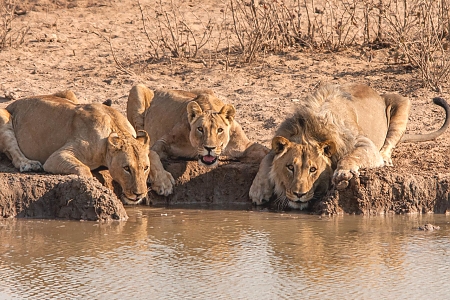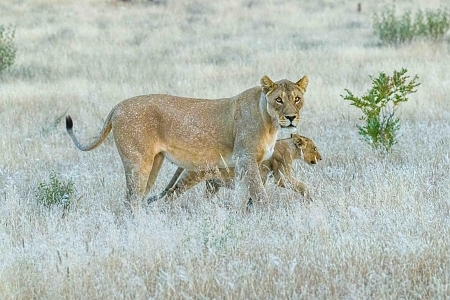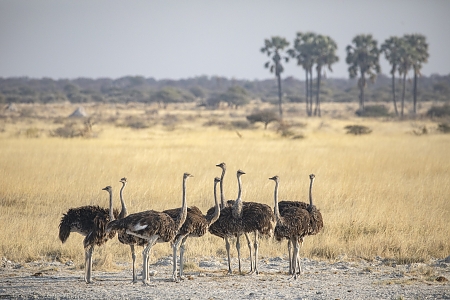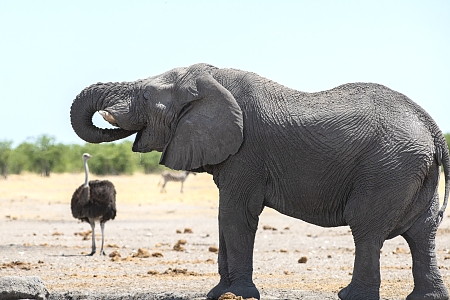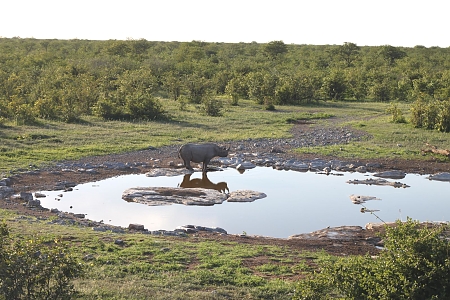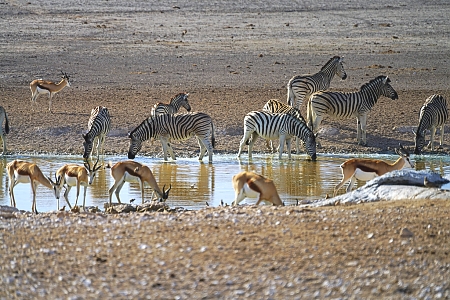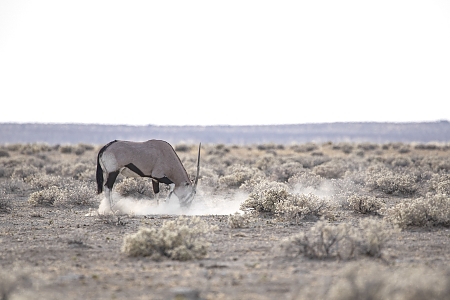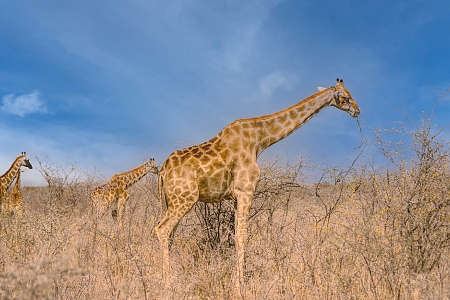Etosha National Park is located in the Kunene region of Namibia. The name, “Etosha,” translates locally to “Great White Place.” The name of the park is derived from the Etosha pan which accounts for 23-25% of the national park area.
The pan extends 1,840 square miles (4,760 sq km) with the entire Etosha National Park accounting for 8,600 square miles (22,270 sq km). Originally a lake, the pan rarely has water unless the rains are heavy. When these rains occur, it attracts a significant number of wading birds with flamingos being one of the favorites.
The Etosha region is comprised of saline desert, savanna woodlands, savanna, and grasslands. The pans are mostly void of pants apart from some of the grasses. Moving away from the pans, Mopane trees account for approximately 80% of the forests in the national park. The majority of the park is arid and sparse with plant life making it easy to see wildlife.
The salt pans and abundance of salt splattered into the desert landscapes attracts animals who are in search of nutrients. The wildlife takes advantage of frequent visits to lick the salt concentrated places. This is one of the largest populations of large game species in all of Africa. The wildlife and unique arid landscapes create an unforgettable wilderness experience.
The national park is home to numerous species of mammals, reptiles as well as an abundance of birds. A safari through the pans and woodlands is what brings most travelers to the area. This arid region of the country makes any watering holes prime places to visit for chances of seeing wildlife. Etosha has added floodlights on several of the commonly visited watering holes to make game viewing a night easier.


